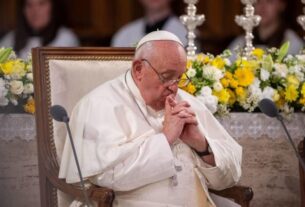Japan’s new Liberal Democratic Party (LDP) leader, Sanae Takaichi, made headlines today after she chose not to visit the controversial Yasukuni Shrine, a move seen as a strategic effort to maintain harmony with neighbouring countries amid delicate political negotiations.
Takaichi, who became LDP leader on October 4, has been navigating turbulent political waters following the collapse of the ruling coalition last week — a setback that momentarily halted her bid to become Japan’s first-ever female prime minister. However, with the LDP now in talks to form a new alliance, her chances of securing the top job may soon rise again, with a parliamentary vote expected on Tuesday.
For decades, visits to Yasukuni Shrine — which honours Japan’s war dead, including convicted war criminals — have been a source of tension with China and South Korea. The last Japanese leader to visit was the late Shinzo Abe in 2013, a mentor to Takaichi, whose conservative stance and firm views on China are well known.
Today, instead of attending in person, Takaichi sent a symbolic offering on the opening day of the autumn festival, a clear signal that she is willing to prioritize diplomacy over symbolism at a time when Japan’s regional relationships are under close watch.
Meanwhile, political negotiations continue behind closed doors. The LDP’s long-time coalition partner, Komeito, ended their 26-year alliance on October 10, citing dissatisfaction with the party’s failure to reform political funding rules after a slush fund scandal. Now, the LDP is in discussions with the Japan Innovation Party (JIP) to build a new coalition government — one that could still enable Takaichi’s ascent to leadership, despite being just two seats short of a majority.
The timing is critical: U.S. President Donald Trump is expected to visit Japan later this month, with trade talks, defence spending, and energy policies high on the agenda. For Japan, stability and leadership clarity are essential before this high-profile diplomatic engagement.
As Fumitake Fujita, co-head of JIP, noted, “We made progress on building mutual trust because President Takaichi and I share similar views on national philosophy and current affairs,” though he acknowledged ongoing differences — particularly over corporate political donations.
Japan stands at a crossroads — between tradition and transformation, between symbolism and strategy. Sanae Takaichi’s decision not to visit Yasukuni Shrine may not just be a diplomatic gesture — it could mark the beginning of a more balanced, forward-looking era in Japanese politics, led by a woman determined to shape history with both courage and caution.




